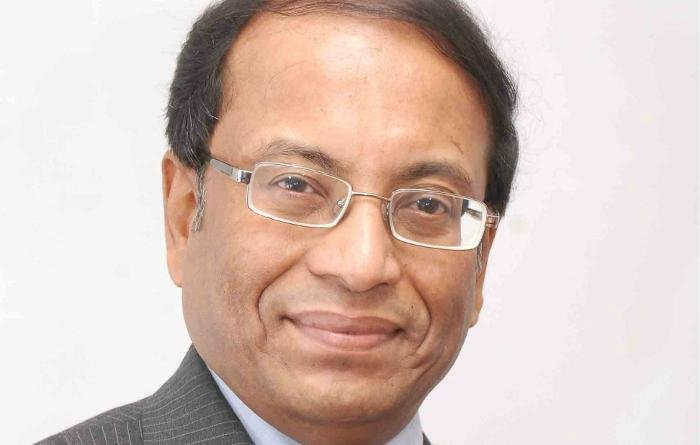Invest in IT backbone and interoperability standards in Healthcare
July 12, 2017 | Wednesday | Interviews
Mr. Anjan Bose, Secretary General, NATHEALTH talks about Digital technologies can help both private and public sector’s program leaders to improve service delivery for all and the digital health programmes would have much deeper
impact for rural masses
Indian healthcare sector aspires to provide quality healthcare to all and to meet the enormous need for efficient healthcare management, digital health can play a very crucial role. The integration of technology and health services in the form of digital health is the key pillar with which the healthcare services delivery and management can be made more efficient.
The government recently unveiled much awaited National Health Policy 2017 which aims at quality care and affordable health services to all. It is promising to note that the government has recognized the importance of digital health and proposed establishment of National Digital Health Authority (NDHA).The proposed Authority aims to regulate, develop and deploy digital health across the continuum of care. It is widely admitted that digital health can bridge the healthcare gap and it has huge potential to revolutionize the public health scenario in the country. Digital Health can be of great help in India which is having to battle the dual burden of communicable and non-communicable or lifestyle diseases. In view of wider adoption of digital health in the country the NDHA would play a very critical role in strengthening the entire healthcare ecosystem.
Role of Private Sector
With deep penetration of technology in the healthcare sector, the joint public private focus on digital would pave the way to the future. The healthcare sector needs to invest in an IT backbone and interoperability standards and provide incentives for adoption.
According to NATHEALTH AAROGYA BHARAT REPORT, non-communicable diseases will cost India $6.2 trillion by 2030. Hence, India’s unique needs drive priorities for healthcare technologies. The priorities include engaging patients through digital health, enhancing care across the continuum through the use of Information Technology.
The private sector shares the responsibility to optimize technology in healthcare with a realization that investing in R&D for prioritized technologies such as telemedicine should enable equitable access to healthcare.
Private sector service providers are collaborating to build IT-enabled Electronic health records (EHRs) and patient databases should improve integrated care and population health. Concentrating on regional initiatives using mobile and Internet strategies—such as telemedicine, doctors on call and remote patient monitoring—can help improve access to healthcare.
Integration of Technology
Digital health is the integration of technology and healthcare to enable effective and uniform healthcare delivery which has full potential to radically transform the healthcare ecosystem. Digital health enables solutions across the healthcare value chain: Awareness, Diagnosis, Treatment & Follow-up.
India has the backbone to support the digital health growth. The Public Private Partnership model needs to be adapted to roll out high impact public health interventions ensuring access in under-served areas and to the dis-advantaged.
The healthcare infrastructure in the country is absorbed in the urban areas, while a sizeable section of the populace lives in rural areas with limited access to quality healthcare facilities. Through the use of technology, this gap can be bridged. Telemedicine that includes tele-consultations, Doctor on call, Teleradiology centers and e-ICUs. E-Health centers are being successfully run in the country by a few healthcare service providers. Lifestyle management can be digitalized with education tools, reminders for diet and medication, mobile systems to track compliance and various mobile applications. Further the patient monitoring can be digitalized by self-testing, basic treatment at home, tracking and monitoring of health related data.
New Trends in Digital Health: Internet of Things (IoT)
The Internet of things (IoT) is the inter-networking of physical devices, vehicles (also referred to as “connected devices” and “smart devices”), buildings, and other items—embedded with electronics, software, sensors, actuators, and network connectivity that enable these objects to collect and exchange data. In 2013 the Global Standards Initiative on Internet of Things (IoT-GSI) defined the IoT as “the infrastructure of the information society.”
The healthcare industry has to keep a watchful eye on the budget and at the same time have updated infrastructure to provide better patient experiences. IoT has provided the seamless connection between devices. Now it is possible for the medical staff to access patient information from the cloud as long as they are stored in there. The goal is to provide quality medical care to patients, and by spending a small amount on IT infrastructure, hospitals can provide good care to patients at affordable rates.
Remote health monitoring is an important application of IoT. Through monitoring, you can give adequate healthcare to people who are in dire need of help. With IoT, devices fitted with sensors notify the concerned healthcare providers when there is any change in the vital functions of a person. Through remote monitoring, patients can significantly reduce the length of hospital stay and perhaps, even hospital re-admission.
A number of healthcare apps providing cutting edge personalized solutions have been launched. Some applications manifest the numerous ways IoT can help healthcare professionals care better for their patients. There is definitely much scope for advancement for IoT in the healthcare sector.
Collaborations
To push digital health, NATHEALTH has collaborated with NASSCOM to create opportunities of using digital technology for taking healthcare to the masses as well as building a foundation for healthcare information highway including better modalities of capturing, sharing and maintaining patient records.
Digital technologies can help both private and public sector’s program leaders to improve service delivery for all and the digital health programmes would have much deeper impact for rural masses as it has all required performance attributes of awareness, accessibility and affordability so vital for universal healthcare and overall a healthy India.










